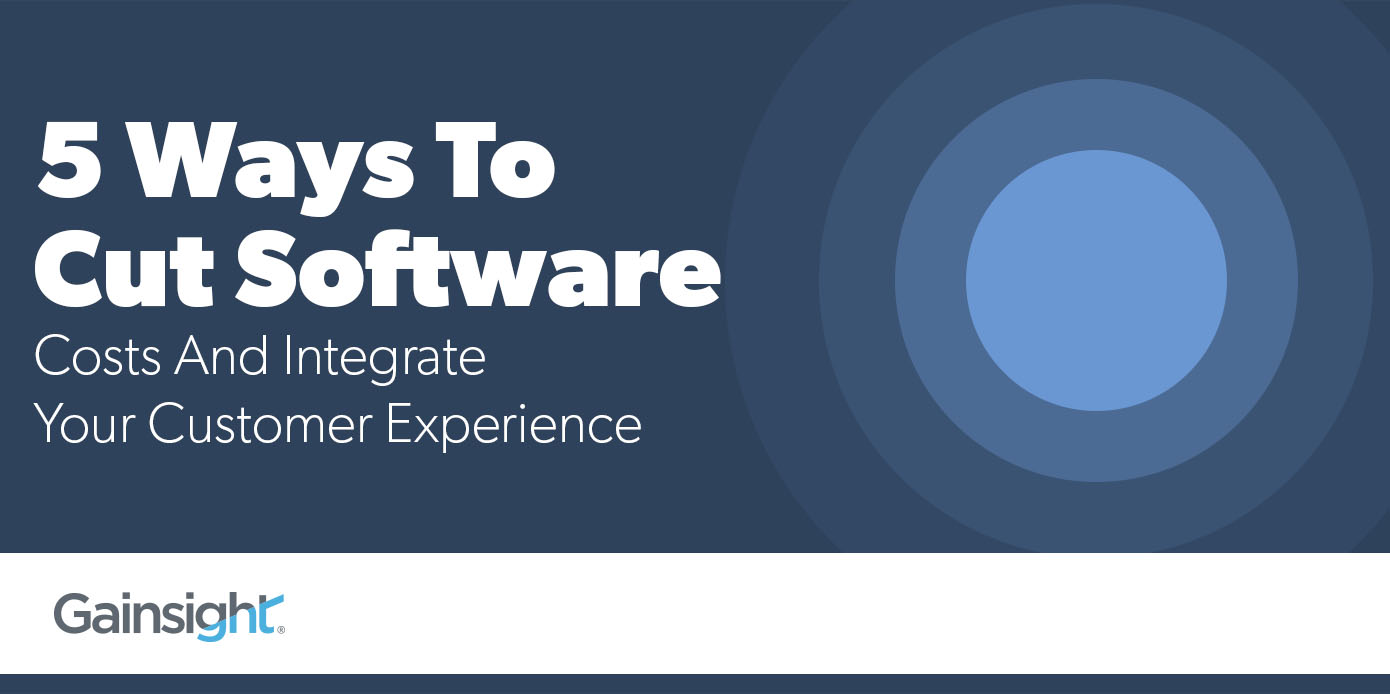This post was co-authored by Ashvin Vaidyanathan.
There are typically 3 phases of the business cycle:
- Do more
- Do less
- Do more with less
The last few months have probably felt like a roller coaster for you, going from #1 at the beginning of the year to #2 during the start of the COVID-19 crisis. Now, most organizations are settling into the reality that digital businesses will continue to grow, but due to uncertainty, most need to be more conservative on spending. Given that retaining customers is more important than ever, your Customer Success teams are likely in situation #3 – doing more with the same or less.
We’ve written about process solutions to “do more with less”. But how can you do more with less software spend?
In our client base, prior to the crisis, we had noticed a renaissance of focus on Customer Success and Customer Experience. That came with a boom in spending on a plethora of systems as well.
The downside of this fragmented approach is:
- Cost: Overlapping tools mean extra software costs and more operational load to manage disparate tools and to connect them together.
- Customer Experience: Disconnected systems mean that employees often don’t have the full picture of the client and end up asking customers questions that the company should already know the answers to.
- Teammate Experience: One of the biggest sources of frustration for employees is having to “swivel chair” between dozens of tools to find the answer they need for a client. This inefficiency adds to the increased workload leading to burnout and low team morale.
As Gainsight has evolved, our clients have found that they are able to consolidate more and more of their customer journey in the platform, thereby saving time and money while making clients and teammates happier and more productive. Below are the 5 most common areas of consolidation:
1. Consolidate Survey / CX Tools Into the CS Platform
At Gainsight, we define Customer Success as the combination of getting clients to their desired Outcomes while ensuring they have a great Experience. In our nerdy lingo, that means CS = CO + CX.
As such, we’ve always thought that measuring how clients feel (CX) needs to be an integral part of the success motion. Surveys should be sent at times that make sense in the overall customer journey. And the follow-up should be part of the overall system of playbooks for CSMs. Finally, survey data should be a key component of an overall customer health score.
Despite this, because of the historical legacy of surveys and CX being more of a corporate measurement program than an operational workflow, CX and survey programs are often divorced from the day-to-day operations of CS teams. When CX is integrated with CS workflows, CSM and Sales teams have easy visibility into survey responses and can follow-up on negative feedback (e.g., to learn and make the customer feel heard) or positive feedback (e.g., for advocacy or expansion).
Since we’ve had surveys integrated into Gainsight since 2013 and given our recent launch of our Experience Center, with rich sentiment analytics, many companies are consolidating all of their survey workflows (e.g., post-case, post-sale, post-onboarding, NPS) and analysis into Gainsight.
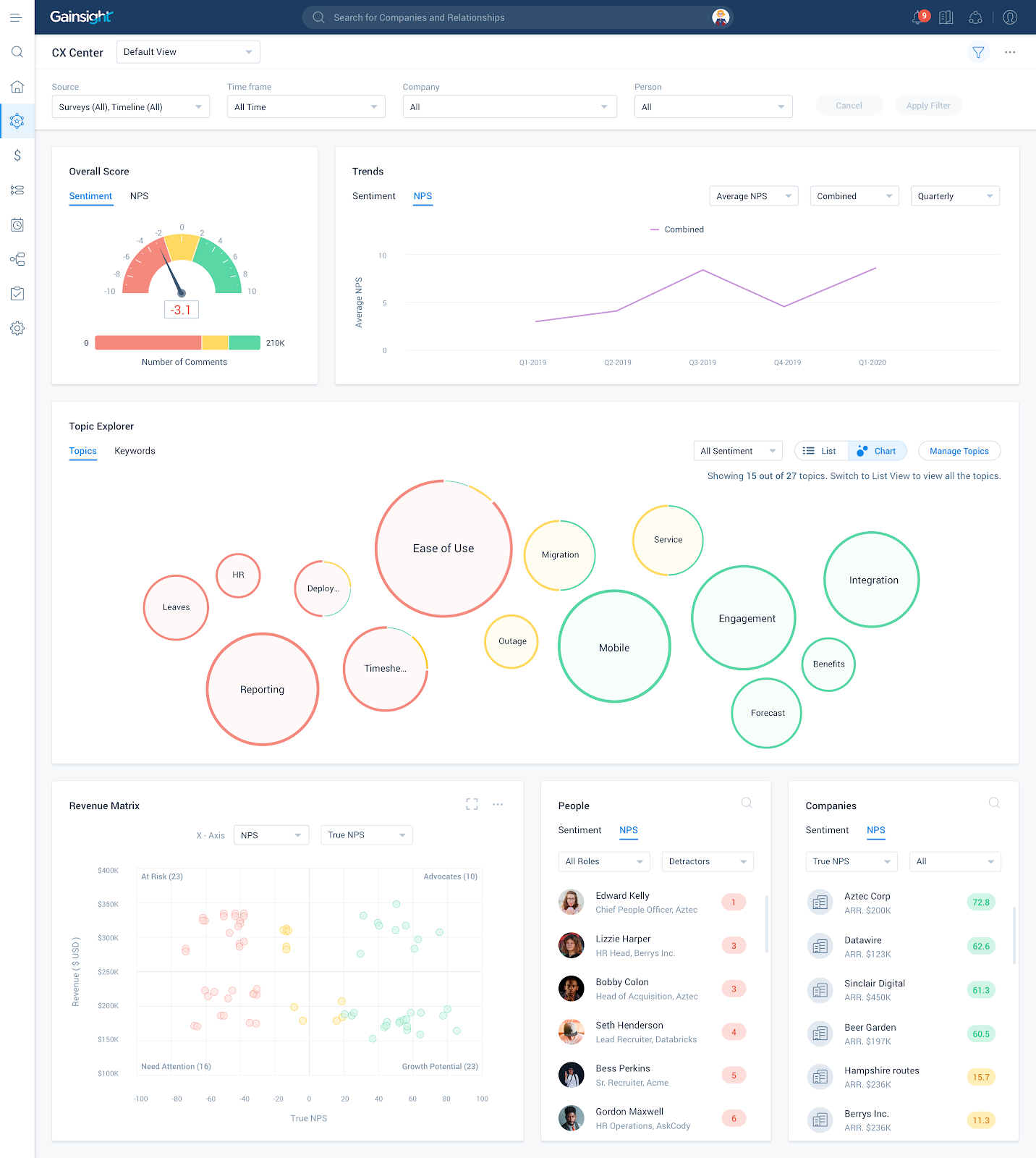
2. Consolidate Customer 1-to-Many Communications Into the CS Platform
The only thing worse than ignoring your customers is when everyone in your company tries to pay attention to them – all at once! For many clients these days, they hear from vendors’ Marketing team, Sales team, CS team, Product team, and more. I’m sure they wonder “do you not talk to each other?”
As more of the B2B customer journey happens after the initial sale, more and more companies have tried to optimize the post-sale customer communications strategy.
This means that communications should be tied to the customer’s situation (e.g., up for renewal), behavior (e.g., hasn’t used a certain feature yet), sentiment (e.g., gave a 6 out of 10 on a recent NPS survey) and more. You also want the flexibility to blend digital and human journeys (e.g., if an email has not been opened or clicked in 7 days, prompt a CSM or Sales rep to call the customer for imminent renewals).
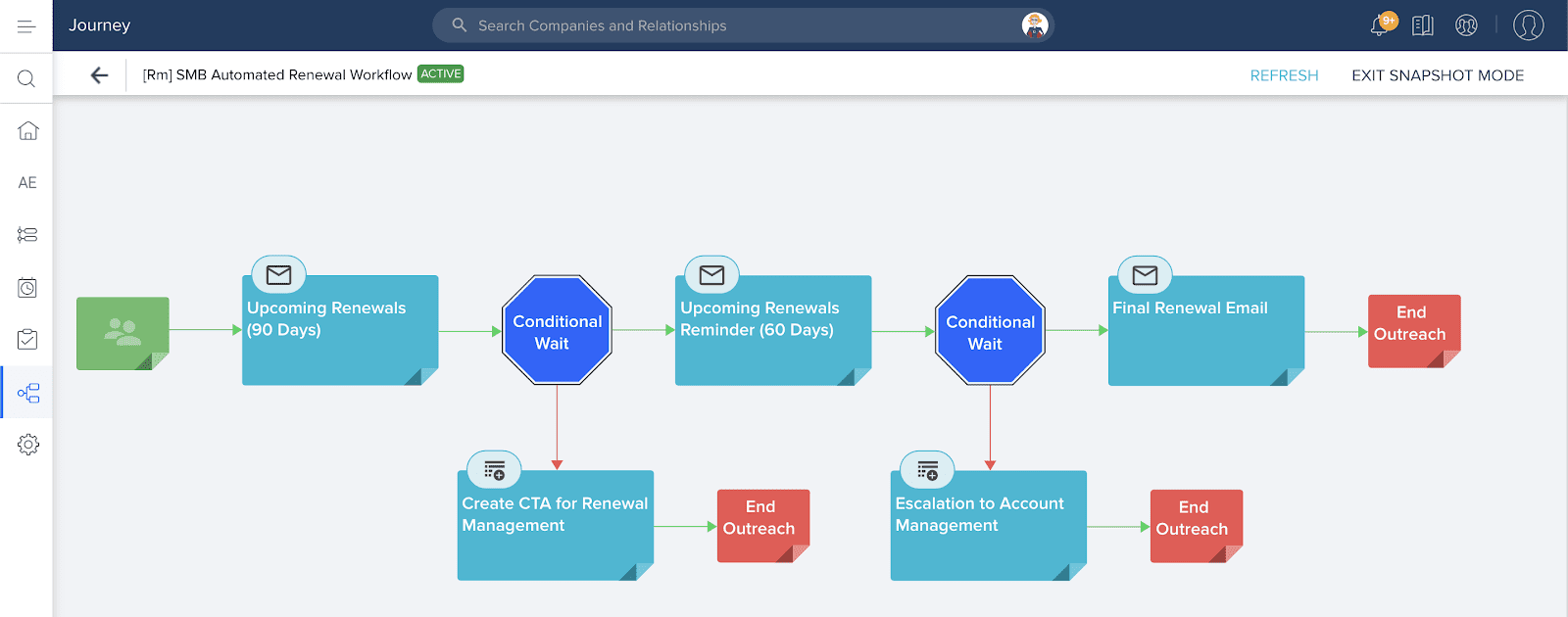
As a result, companies are deciding to retire usage of their Marketing Automation platform for post-sales communications, saving licensing costs, while instead using the built-in Journey Orchestrator capabilities in Gainsight. The customer, in the process, receives more tailored and relevant communications to where they are in their journey. And due to this, they engage more with the content. We’ve seen email open rates double or triple consistently through this approach.
3. Consolidate 1-1 Outreach Into the CS Platform
But campaigns aren’t the only emails being sent to clients. CSMs routinely send dozens or hundreds of emails as one-offs each day. And many of these emails are templates that need to be revised only slightly.
Because of this need, many companies have purchased email outreach tools for their CSM teams to automate templated emails.
Companies can consolidate these one-offs into Gainsight Email Assist and send emails from templates, with light personalization, tracking, and everything else a CSM needs, directly from Gainsight’s Cockpit or from the CSM’s email client of choice.

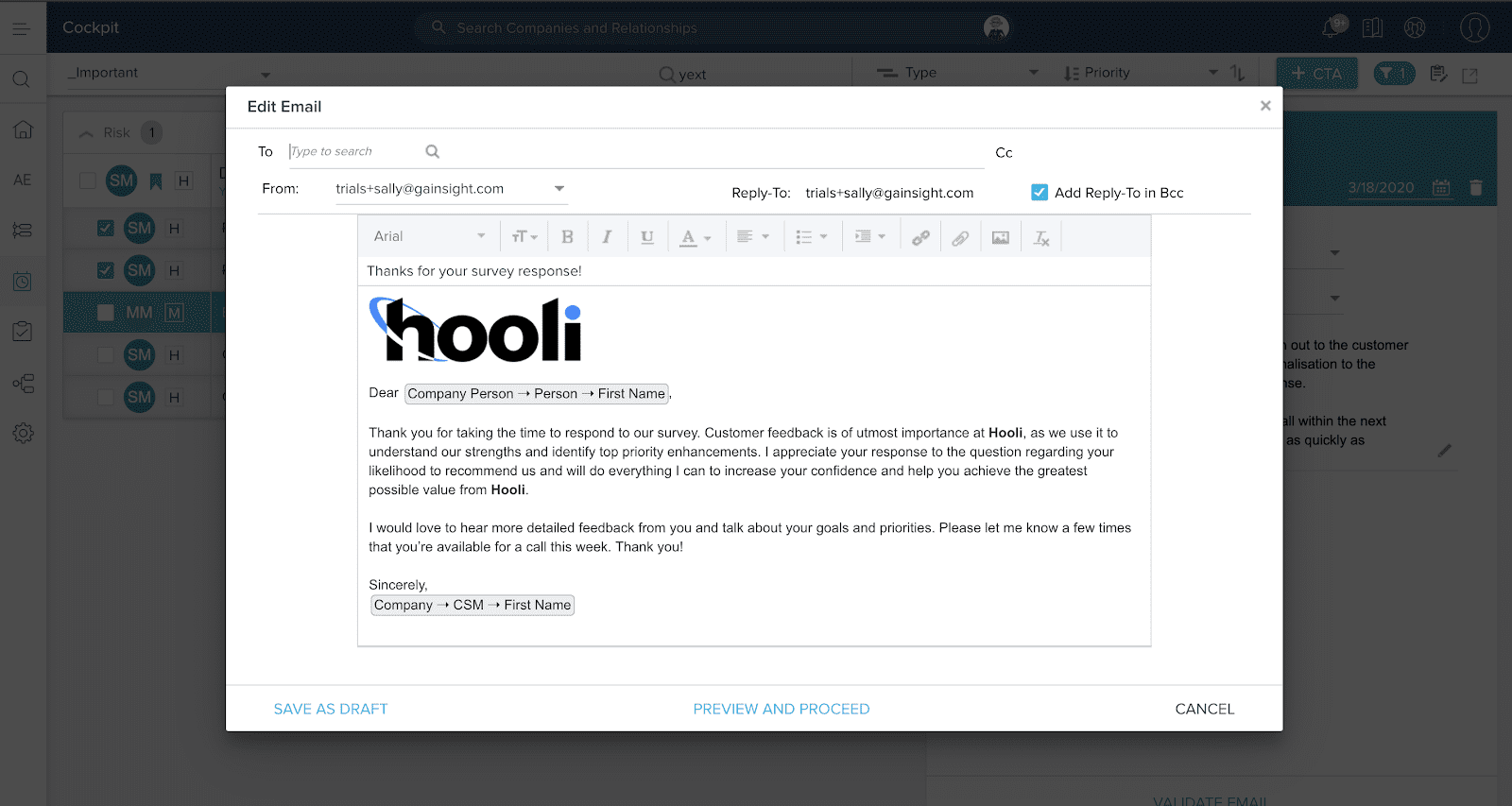
4. Consolidate Product Analytics, In-product Messaging, and In-product Surveys into the CS Platform
Continuing the theme of silos, many organizations have realized that one of the most valuable pieces of real estate for customer attention has been in the products themselves.
As a result, B2B applications are filled with a litany of “popup” guides, surveys, and analytics that don’t even sync with each other. Meanwhile, the Customer Success team is in the dark about the data coming out of the systems, while having to apologize for the frustrating experience for end-users.
When companies leverage the built-in Product Experience capabilities in Gainsight, they can ensure:
- Analytics and usage data from the application automatically flows to the hands of the front-line Customer Success Managers
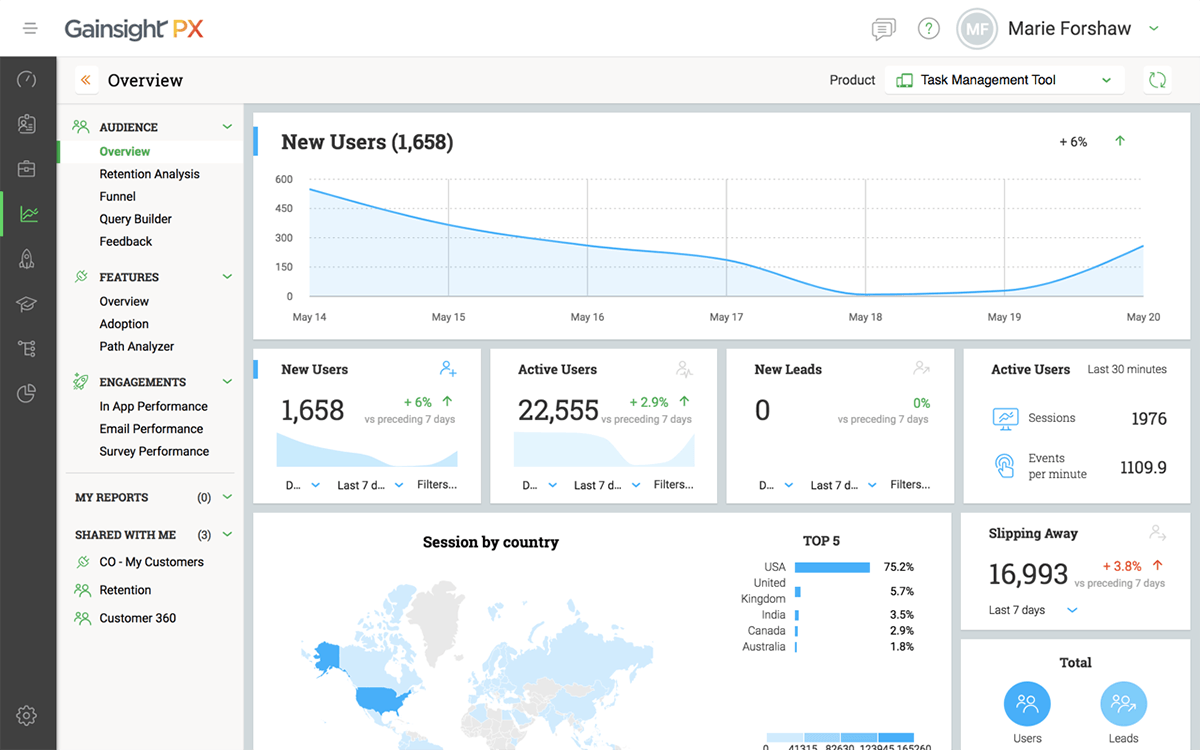
- CSMs can make sure that the messages and actions they want to reinforce are the same across emails, their calls and the product itself
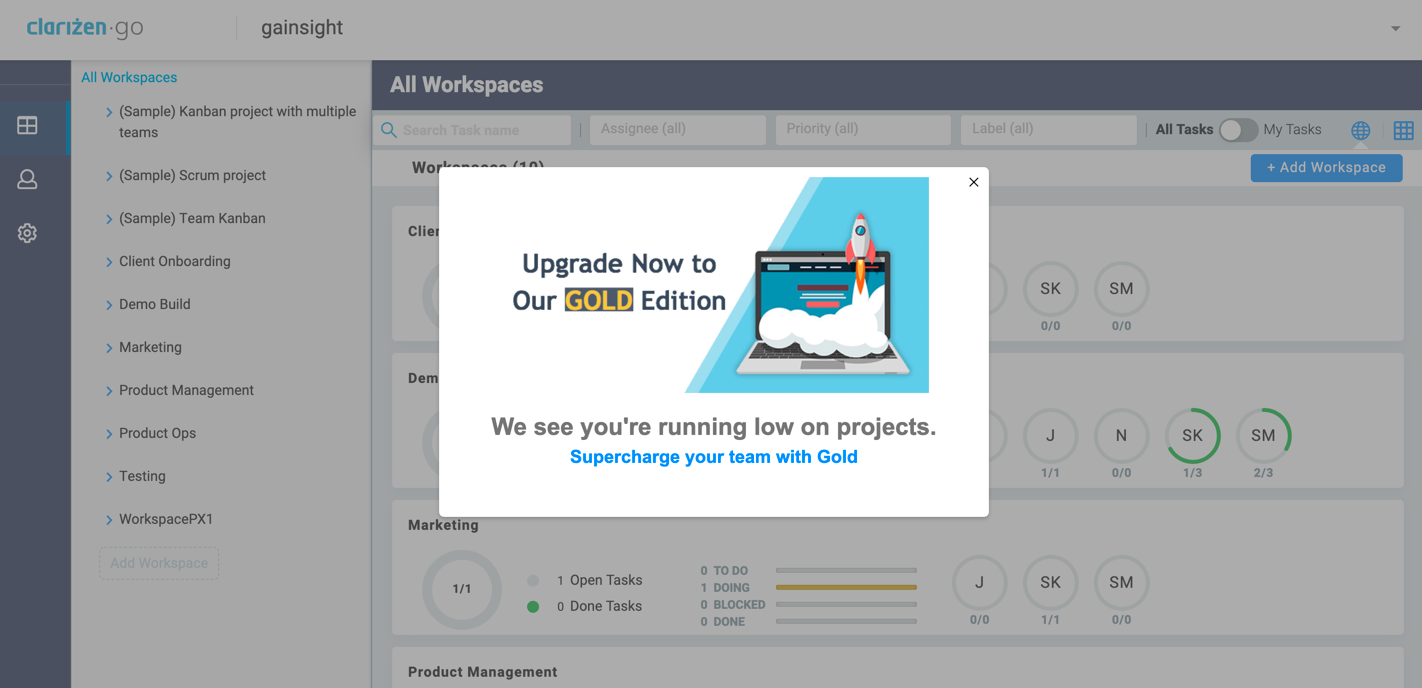
- Customer Experience teams can use the product to drive higher response rates on surveys

5. Consolidate Account Planning Into the CS Platform
A key benefit of strong Customer Success should be renewal and expansion. Yet, if CSMs are totally disconnected from their Sales peers, this vision may never come to fruition.
While this is probably the newest area of collaboration, we are seeing companies decide to dive in and have Sales and CS work more closely with Gainsight as the conduit including:
- Using Success Plans for Account Planning, replacing legacy account planning tools that aren’t customer-centric.
- Using People Maps to align Sales and CS around the organizational view of a client. Especially useful for managing your Enterprise customers, you can identify survey responses by person on the org chart as well as who influences whom within the org.
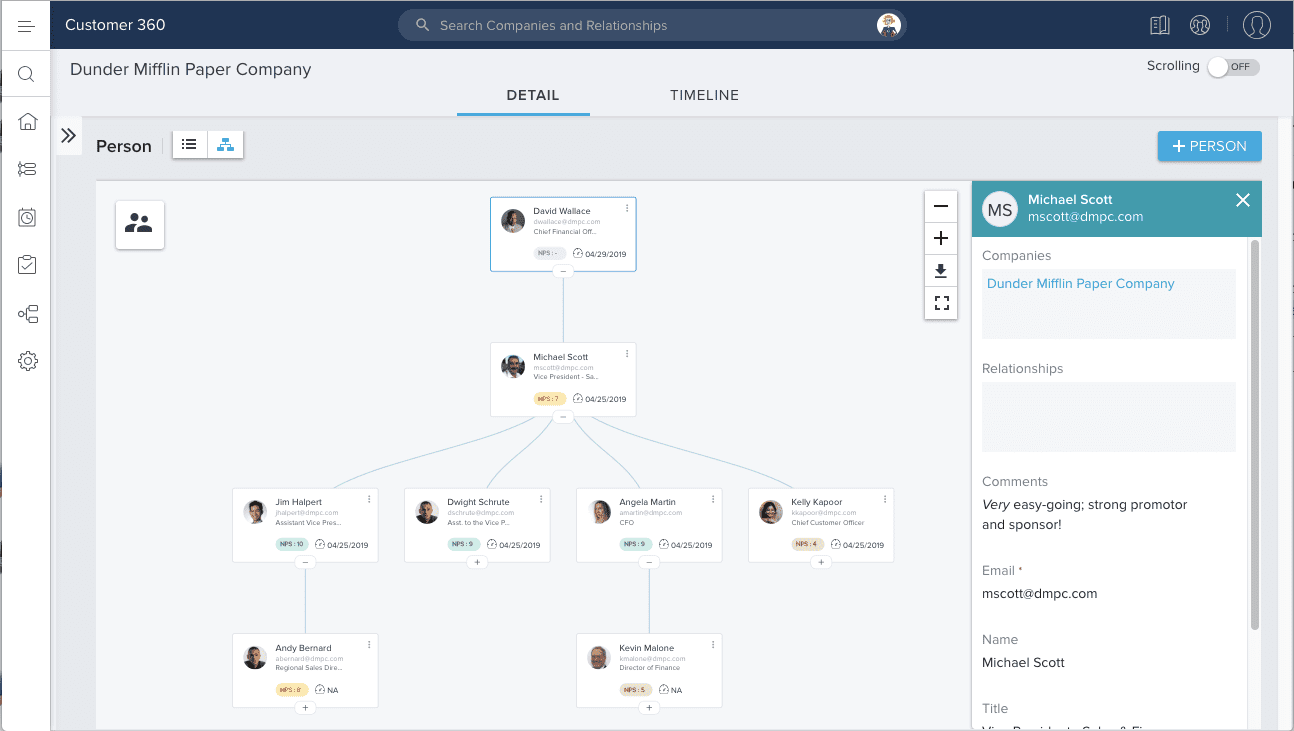
- Using Company Intelligence to make sure Sales and CS know the latest happenings at a customer in terms of news, saving time searching Google Alerts or money on third-party data services.
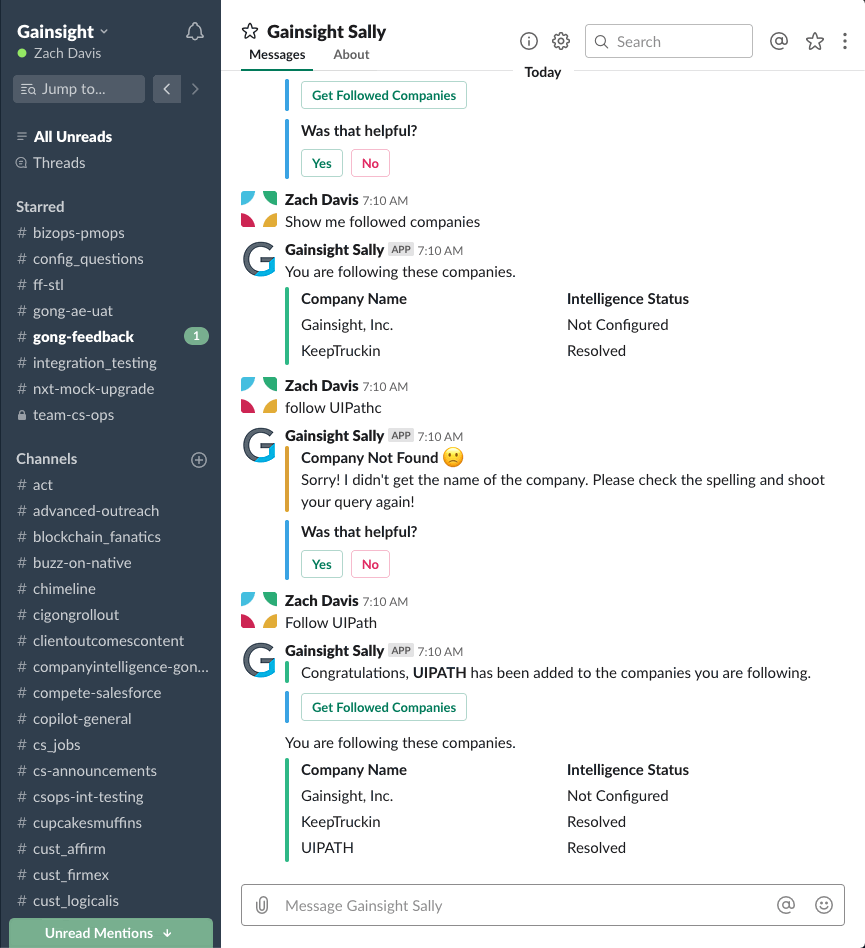
- Using Renewal Center to ensure strong cross-functional partnerships around upcoming renewals.
Consolidation Benefits All
The end result of all of this is:
- Customer Experience: The journey is more integrated. Customers receive communications tied to their specific situation. Everyone in the company is on the same page about what’s happening with clients.
- Teammate Experience: The above integration means CSMs spend less time switching between tabs and more time speaking to clients.
- Cost Savings: Gainsight clients have been able to retire 3-5 redundant software tools, with the resulting cost and operational savings.
If you’d like to discuss these ideas more, feel free to contact your Gainsight Client Outcomes Manager (CSM).
